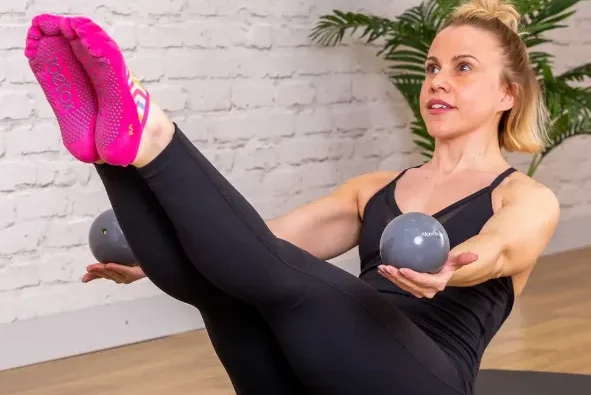
We’ve all experienced that feeling after an intense workout—muscles so sore that even the simplest tasks, like sitting down or raising your arms, become difficult. Whether you’re just starting out on your fitness journey or you’ve pushed yourself a bit too hard, sore muscles can be a frustrating obstacle. This post-workout pain, known as DOMS (Delayed Onset Muscle Soreness), can leave you feeling stiff and uncomfortable for days. However, there are several ways to ease this discomfort and speed up your recovery. Here are five effective methods that you can easily do at home to reduce soreness and improve your post-workout recovery.
1. Foam Rolling and Lacrosse Balls
Foam rolling is one of the most effective ways to relieve muscle soreness and improve circulation. By using a foam roller on the muscles you’ve just worked, you can break up knots, improve blood flow, and reduce stiffness. Foam rolling before stretching helps to loosen up tight muscles, making stretching more effective. Focus on areas that typically get sore, such as your thighs, hamstrings, and lats. For deeper, more persistent knots, a lacrosse ball can be a great tool to apply more targeted pressure. It’s perfect for areas like the shoulder blades, glutes, and calves. If you’re unsure how to foam roll properly, there are plenty of tutorials available online that guide you through the process.
2. Light Cardio or Yoga
The day after a tough workout, the last thing you probably want to do is move. However, light cardio or yoga can help reduce soreness by increasing blood flow to your muscles, delivering vital nutrients and helping flush out waste products like lactic acid. You don’t need to do anything intense—low-impact activities such as walking, cycling, swimming, or using an elliptical machine for 20-40 minutes are ideal. Yoga is also a fantastic option for recovery. It not only helps stretch out tight muscles but also aids in calming the body and improving flexibility.
3. Branched-Chain Amino Acids (BCAAs)
After intense exercise, your muscles need to repair and rebuild, which is where BCAAs come in. Branched-chain amino acids are essential for muscle recovery and can help reduce post-workout soreness. You can take BCAAs in pill or powder form before, during, or after your workout. They’re particularly beneficial if you’re lifting weights or participating in high-intensity exercises. BCAAs can also support muscle maintenance if you’re on a calorie deficit. In addition to their muscle-repair benefits, flavored BCAAs can help you stay hydrated, which further supports recovery.
4. Acupressure Mats
Acupressure mats are a surprisingly effective tool for relieving soreness and improving blood circulation. These mats are covered with plastic spikes that stimulate pressure points when you lie or sit on them, promoting blood flow and oxygen delivery to muscles. This process helps release endorphins, the body’s natural painkillers, which can reduce muscle tension and aid in healing. Spending 10-20 minutes on an acupressure mat can provide significant relief. In addition to muscle recovery, the mat can also help you relax and improve your energy levels. Many people find it helpful to use before bed to aid in sleep or in the morning to start the day feeling energized.
5. Stretching
While stretching may not directly reduce muscle soreness, it plays an important role in preventing future tightness and injury. Stretching helps maintain flexibility and keeps your muscles in optimal condition. After foam rolling or working out, stretching allows muscles to return to their normal length and reduces the risk of stiffness and pain. Be sure to stretch all areas you’ve worked on, especially your legs and lower back. Many times, muscle pain is referred from other areas, so full-body stretching can be a great way to prevent discomfort in the long term.
Conclusion
While post-workout soreness can be uncomfortable, it’s a natural part of the recovery process. By incorporating these strategies—foam rolling, light cardio or yoga, BCAAs, acupressure mats, and stretching—into your routine, you can significantly reduce soreness and speed up recovery. These methods are easy, affordable, and effective ways to ensure that your muscles stay healthy and that you’re ready for your next workout. So next time you’re feeling sore, try these techniques to get back to feeling your best faster.












